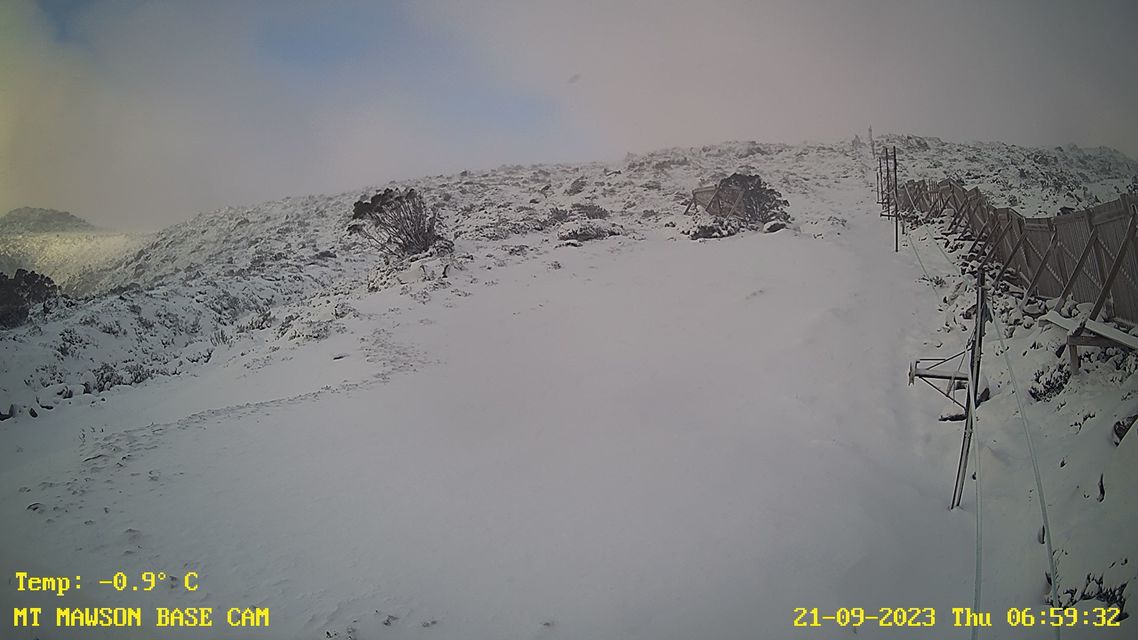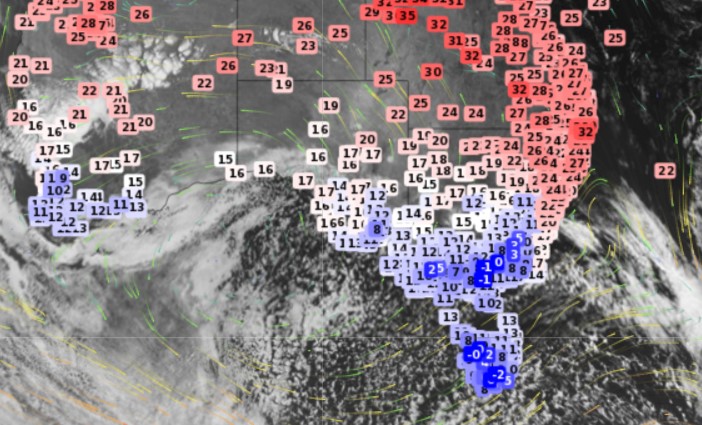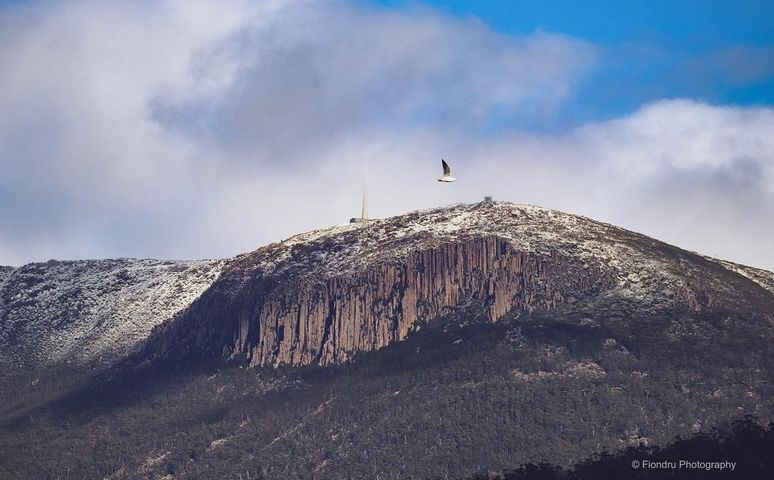Light snow has fallen across Tasmania and the alpine areas of New South Wales and Victoria on a day when Victoria’s last ski resort (Falls Creek) closed, proving the weather gods have a cruel sense of humour.
Snow was heaviest in Tasmania, with an accumulation of several centimetres at the tiny club-run ski field of Mt Mawson, two hours northeast of Hobart.

Image: The date stamp reveals all. Source: Mt Mawson.
On the flanks of kunanyi/Mt Wellington just outside Hobart, the snow wasn’t quite heavy. The mountain recorded 1.2 mm of the frozen flaky form of precipitation in the 24 hours to 9 am Thursday, which translates roughly to a centimetre of snow.
A dusting like that will likely be gone by later today, but Hobart’s photographers were out and about on Thursday morning snapping the mountain – and a rogue seagull or two – in all its glory.

Image: No chips, but there was a bit of flake. Source: @fiondru.photography on Instagram.
The cool air down south has replaced the heat which dominated the first part of this week, with cool air moving about halfway up the NSW coast.
In northeast NSW and southeast Qld, it promises to be a scorcher this Thursday, with temps heading for the low-to-mid thirties in all but the most exposed coastal areas like Cape Byron.

Back down south, that cold air is set in for a couple of days. A speckled Southern Ocean airmass is always a sign of cold air down south, and max temps won’t return to the twenties in Melbourne or Hobart until Sunday.
Canberra should even see frost over the next few mornings with minimum temps around the freezing mark. For more information on our maximum and minimum temperature forecasts, extreme temperatures and heatwaves to snow, please contact us at apac.sales@dtn.com.






